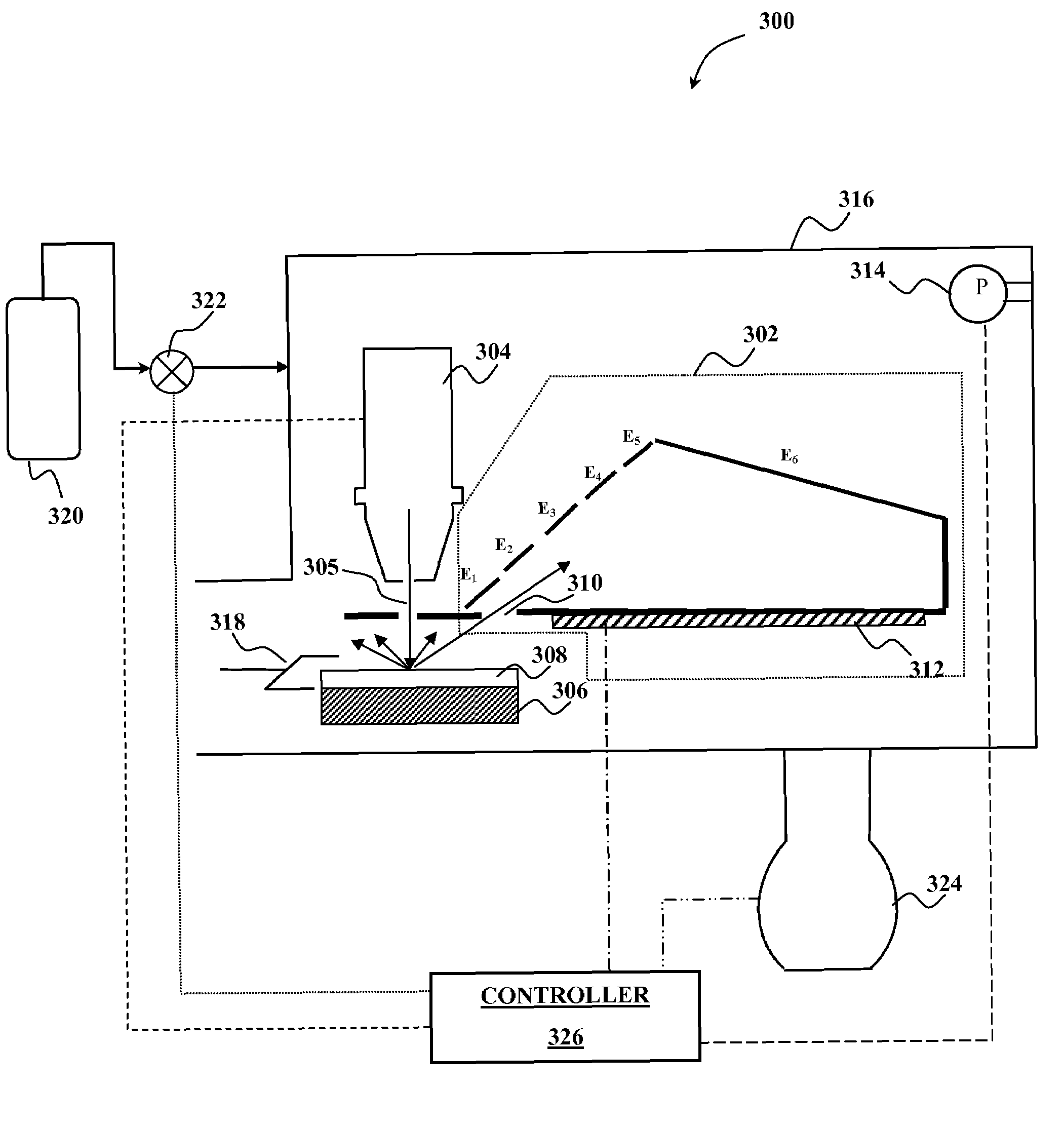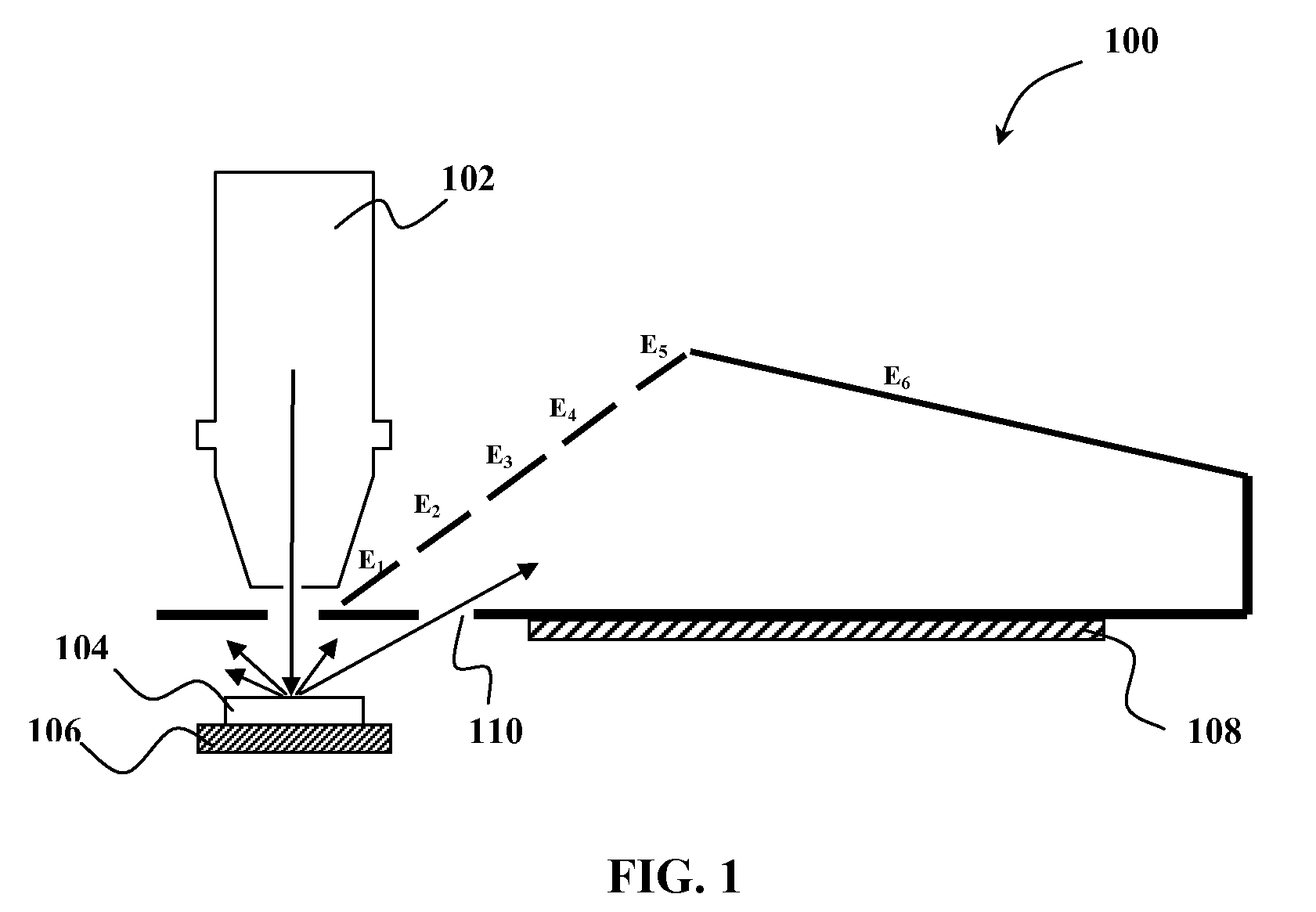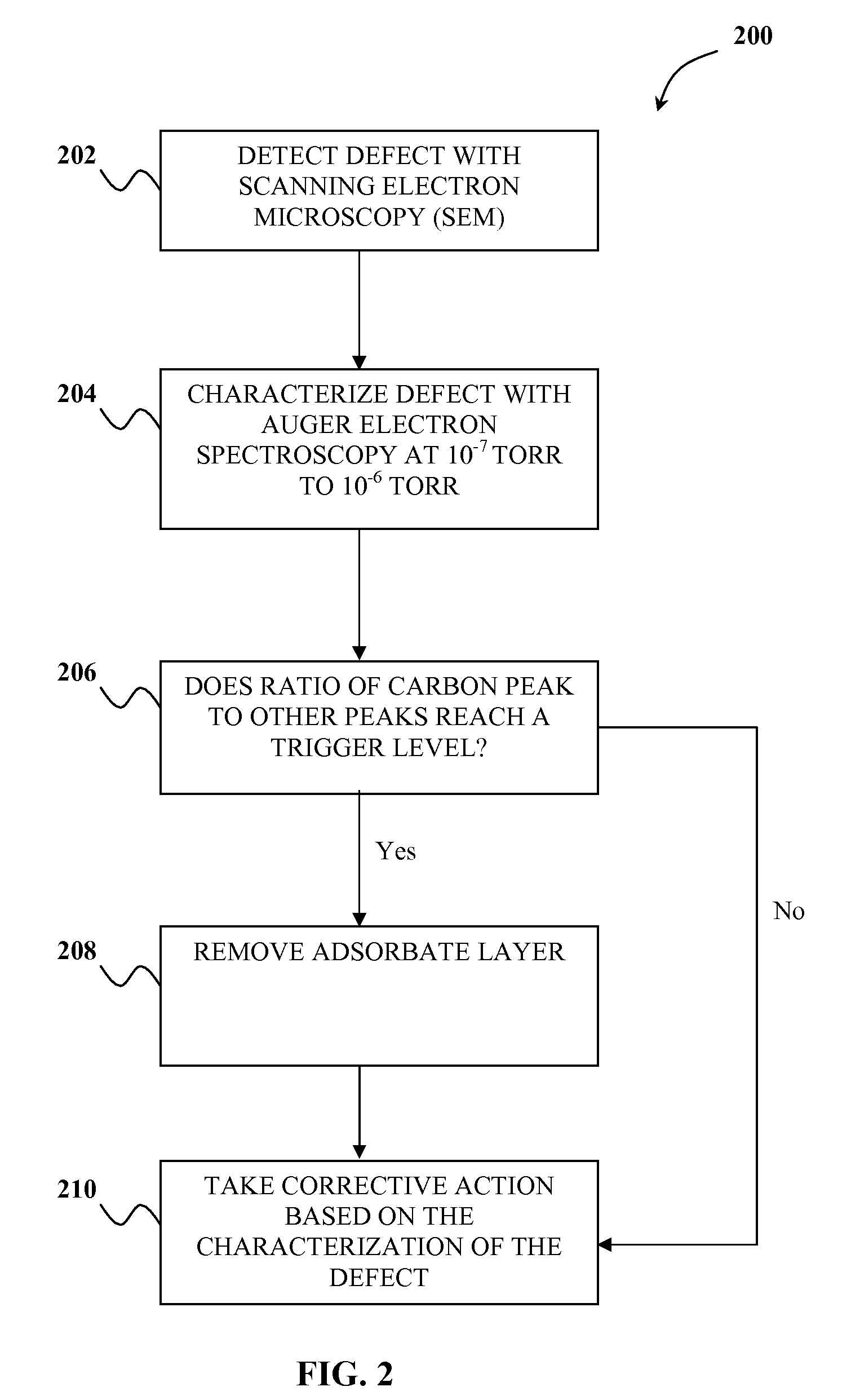Method and instrument for chemical defect characterization in high vacuum
a high-vakuum chemical defect and instrument technology, applied in the field of auger electron spectroscopy in high-vakuum system, can solve the problems of edx not having the sensitivity to chemical characterization, affecting device yield, and increasing demands on fabrication processes
- Summary
- Abstract
- Description
- Claims
- Application Information
AI Technical Summary
Benefits of technology
Problems solved by technology
Method used
Image
Examples
Embodiment Construction
[0014]Although the following detailed description contains many specific details for the purposes of illustration, anyone of ordinary skill in the art will appreciate that many variations and alterations to the following details are within the scope of the invention. Accordingly, the exemplary embodiments of the invention described below are set forth without any loss of generality to, and without imposing limitations upon, the claimed invention.
Introduction
[0015]Defects in a substrate that can be detected by scanning electron microscope (SEM) but are too small to be imaged with the SEM may be chemically characterized using a charged particle spectroscopy technique such as Auger electron spectroscopy. In the art of Auger electron spectroscopy, the electron energy analyzers operate by injecting the diverging electrons into an electric field using a few simply shaped electrodes. Auger electrons of a particular energy injected from the sample into the electric field are deflected by th...
PUM
| Property | Measurement | Unit |
|---|---|---|
| size | aaaaa | aaaaa |
| diameter | aaaaa | aaaaa |
| depth | aaaaa | aaaaa |
Abstract
Description
Claims
Application Information
 Login to View More
Login to View More - R&D
- Intellectual Property
- Life Sciences
- Materials
- Tech Scout
- Unparalleled Data Quality
- Higher Quality Content
- 60% Fewer Hallucinations
Browse by: Latest US Patents, China's latest patents, Technical Efficacy Thesaurus, Application Domain, Technology Topic, Popular Technical Reports.
© 2025 PatSnap. All rights reserved.Legal|Privacy policy|Modern Slavery Act Transparency Statement|Sitemap|About US| Contact US: help@patsnap.com



